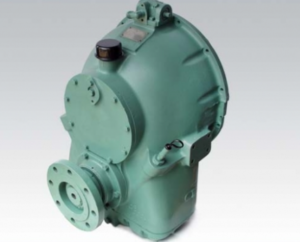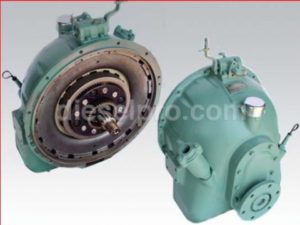

Allison M Rebuilt Marine Transmission
Overhaul Kit & Related Components For Allison M
Allison M Seals
Allison M Clutch Plates
Allison M Hydraulic Pump
Allison M Selector Valve & Related Components
Allison M Bearings & Related Components
Allison MH Rebuilt Transmission
Allison MH Overhaul Kit & Related Components
Allison MH Seals
Allison MH Clutch Plates & Related Components
Allison MH Hydraulic Pump
Allison MH Selector Valve
Allison MH Bearings & Related Components
Regular maintenance is the key to extending the life of Allison M & MH marine transmissions. These transmissions are built to perform under the harshest marine conditions, but even the most rugged equipment requires consistent upkeep. A well-planned maintenance schedule not only prevents unexpected failures but also ensures peak efficiency, fuel economy, and safe operation.
Marine environments are uniquely demanding due to salt exposure, vibration, continuous load cycling, and moisture intrusion. By following a structured checklist of daily, weekly, and seasonal inspections, operators can catch minor issues before they evolve into major failures.
Daily Checks (Pre-Operation)
Before every departure, perform these inspections with the vessel secured in neutral:
- Check transmission fluid level: Use the dipstick to verify that oil is at the correct HOT or COLD level depending on engine state.
- Inspect for visible leaks: Look beneath the transmission for signs of fresh oil drips. Examine cooler line fittings, gasket flanges, and output seals.
- Listen for abnormal noises when shifting from neutral to forward/reverse at idle.
- Check shift lever movement: Ensure smooth, complete movement through all positions.
- Monitor for vibration: Excess vibration during the last trip can indicate misalignment or shaft wear.
Weekly Checks
Each week, whether or not the vessel is used daily:
- Wipe down the housing: Remove salt buildup, dust, and oil residue to prevent corrosion and ease leak detection.
- Inspect linkage and cable tension: Check shift cables for slack, corrosion, and frayed sheathing. Tighten brackets if loose.
- Inspect transmission mounts: Check rubber or composite mounts for cracks, compression sag, or movement under load.
- Top off transmission fluid if necessary, using only the approved fluid (see previous section).
Seasonal or Monthly Checks (Depending on Usage)
At least every 25–50 running hours or at the beginning of each operating season:
- Drain a fluid sample for visual inspection and lab testing.
- Check output coupling bolts for torque integrity.
- Inspect shift shaft seals and vent lines for signs of moisture ingress.
- Check oil cooler lines and fittings for chafe, corrosion, and pressure integrity.
- Perform a static pressure check using test ports to confirm operating range.
For commercial applications, these checks may be required weekly depending on duty cycle. Diesel Pro Power recommends developing a logbook with timestamps for all checks and findings.
Oil and Filter Change Intervals For Allison M & MH Marine Transmissions
Lubricating fluid is not just a lubricant—it also performs cooling and hydraulic actuation. Over time, even the best oil degrades from heat, pressure, and contamination. Staying ahead of your oil and filter changes is one of the most powerful ways to extend transmission life and avoid costly rebuilds.
Recommended Oil Change Intervals
For Recreational Use:
- Change oil every 100 to 150 hours or once per year, whichever comes first.
- If the vessel is only used seasonally, change at the end of the boating season.
For Commercial/Heavy Use:
- Change oil every 50 to 100 hours, depending on operating temperature and load conditions.
- Vessels with continuous-duty engines (e.g., ferries, tugs) may require oil changes every 30–50 hours under severe conditions.
Factors that reduce oil life:
- Operating above 200°F for extended periods
- Oil cooler failure or bypass
- Saltwater intrusion due to vent or seal leaks
- Infrequent use (condensation buildup)
Filter Replacement Best Practices
Every time you change the transmission fluid:
- Replace the internal oil filter, located behind an access plate or in an inline filter housing.
- Inspect the removed filter for metallic debris, clutch material, or milky appearance (indicating water).
- Use only marine-rated, high-flow filters. Diesel Pro Power stocks Allison M & MH compatible filters with OEM-matching pressure and micron specs.
Recheck fluid levels after filter replacement and run the transmission in neutral for 2–3 minutes to circulate and refill passages.
Temperature and Pressure Monitoring For Allison M & MH Marine Transmissions
Monitoring internal transmission temperature and hydraulic pressure provides early warning for impending failures. Allison M & MH transmissions are designed to operate within tight thermal and pressure tolerances. Deviations often indicate clogged filters, worn pumps, or clutch problems.
Operating Temperature Ranges
- Normal Range: 140°F to 180°F
- Warning Range: 180°F to 200°F
- Critical: Above 200°F requires immediate investigation and possible shutdown
Excess heat causes:
- Breakdown of friction modifiers in oil
- Warped clutch plates
- Accelerated bearing wear
- Gasket and seal degradation
Tip:
Always check the temperature after long idle periods or low-speed cruising, as reduced oil flow can create localized hot spots.
Monitoring Options
- Analog Transmission Temperature Gauge
- Mounted at helm
- Reads from a sending unit installed in transmission case or oil line
- Digital Pressure/Temperature Combo Sensor
- Installed on test port
- Provides real-time pressure (psi) and temperature (°F) with alarm triggers
Normal Hydraulic Pressure Ranges (MH Series)
- Idle (Neutral): 60–90 psi
- In Gear at Idle: 90–130 psi
- Under Load: Up to 200 psi
- Pressure Drops or Surges can indicate:
- Clogged oil cooler
- Leaking clutch seals
- Worn oil pump
- Air in hydraulic system
Record temperature and pressure during startup, under load, and after cooldown. Create a reference log for your specific vessel to detect performance drift over time.
Linkage and Cable Adjustment For Allison M & MH Marine Transmissions
Precise shifting is critical for safety and smooth operation. Whether your vessel uses mechanical linkage or a cable system, improper adjustment leads to grinding, engagement delay, or clutch wear.
When to Adjust Linkage or Cables
- After vibration-heavy use
- When replacing shift controls or levers
- If transmission does not fully engage forward or reverse
- If there’s excessive play or stiffness in the helm shift lever
Mechanical Linkage (Rod System)
- Inspect all pivot points and bushings
- Look for wear, corrosion, or oblong holes
- Apply marine-grade grease to all joints
- Align control lever positions
- Move helm control to full forward, verify transmission lever reaches the stop
- Repeat for reverse
- Adjust rod length as needed for synchronized range
- Tighten locknuts and retest through several full shifts
Cable Control Systems
- Check cable integrity
- Look for cracks in sheathing, rusted cores, or sticky spots
- Replace any damaged cable—do not lubricate unless specified
- Position transmission lever to neutral
- Confirm helm control also reads neutral
- Adjust threaded cable end fitting to eliminate preload or slack
- Secure cable clamp
- Use cable clips rated for marine vibration
- Use cable clips rated for marine vibration
- Cycle full range
- Engage forward, neutral, and reverse several times and confirm the transmission engages fully with each position
Note: Never force a shift. Excessive tension or misalignment will damage the shift shaft or internal selector mechanism.
Fluid Sampling For Wear Indicators For Allison M & MH Marine Transmissions
Fluid analysis is an often-overlooked but incredibly powerful diagnostic tool. Sampling transmission fluid at regular intervals allows for early detection of mechanical wear, contamination, and impending failures—before symptoms arise.
What to Look For
- Color and Odor
- Normal ATF: bright red and slightly sweet
- Degraded oil: dark brown or black, burnt smell
- Milky: indicates water intrusion (dangerous—change immediately)
- Metal Particles
- Use a magnet to inspect the drain plug or filter screen
- Fine dust is normal in older units
- Large flakes or shiny bits point to clutch or gear damage
- Foaming
- Indicates air entry through suction lines, overfilling, or wrong fluid
Laboratory Fluid Analysis
Diesel Pro Power recommends fluid sampling every 100 hours or twice per season for:
- Commercial operators
- Charter boats
- Towing or utility vessels
- Any vessel operating more than 150 hours per year
Professional labs will test for:
- Viscosity
- Acid number (oxidation level)
- Water content
- Wear metals (iron, copper, aluminum)
- Contaminants (fuel, coolant)
By trending results over time, you can:
- Detect clutch breakdown before slippage occurs
- Confirm oil cooler leaks before full contamination
- Track wear rates and schedule overhauls proactively
Final Thoughts On Scheduled Maintenance For Allison M & MH Marine Transmissions
Allison M & MH marine transmissions are trusted worldwide for their resilience and service life—but no transmission, no matter how well-built, can survive neglect.
Routine maintenance is an investment in uptime, safety, and performance:
- Daily checks keep you ahead of small leaks and shifts in behavior
- Oil changes and filter swaps maintain hydraulic control and prevent slippage
- Pressure and temperature tracking warn of cooling issues or internal damage
- Linkage adjustments ensure consistent, confident gear engagement
- Fluid sampling catches trouble early—when repairs are affordable
At Diesel Pro Power, we support this maintenance process with:
- Premium aftermarket gasket and seal kits
- Transmission rebuild components
- Filters and fluid recommendations
- Technical assistance and part compatibility help
Use this section as your standard operating procedure for ongoing maintenance and refer back before each trip, season, or overhaul planning session.
Allison M Rebuilt Marine Transmission
Overhaul Kit & Related Components For Allison M
Allison M Seals
Allison M Clutch Plates
Allison M Hydraulic Pump
Allison M Selector Valve & Related Components
Allison M Bearings & Related Components
Allison MH Rebuilt Transmission
Allison MH Overhaul Kit & Related Components
Allison MH Seals
Allison MH Clutch Plates & Related Components
Allison MH Hydraulic Pump
Allison MH Selector Valve
Allison MH Bearings & Related Components



 Free US Calls: 1-888-433-4735
Free US Calls: 1-888-433-4735 International: 305-545-5588
International: 305-545-5588